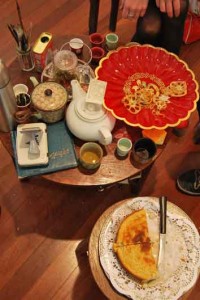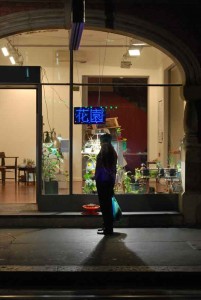06:
We have an exhibition opening at Firstdraft Gallery in Sydney in 2 days time. It’s called Colony Collapse and concludes our studio residency at the new Firstdraft Depot. There will be a hive of native stingless bees, amongst other things (drawings, constructions etc.) relating to the development of our forthcoming project for the Museum of Contemporary Art‘s In the Balance exhibition. Also opening at the same time are shows by Bronwyn Carter, Luke Thurgate and Baden Pailthorpe.
0

Colony Collapse
Tessa Zettel & Karl Khoe
Colony Collapse continues Tessa Zettel & Karl Khoe’s ongoing collaborative project to micro-farm pockets of the city, cannibalising leftover building materials (and other devices of protection/preservation) in the construction of makeshift experiments in urban self-sufficiency. At Firstdraft the artists investigate the possibilities for small-scale mobile honey production in the gallery and beyond, as they prepare to build a hybrid native beehive-food cart destined for Sydney Cove. With food crisis, suburban sprawl and the colony’s precarious histories (and futures) on their minds, Zettel & Khoe invite audiences in to smell the flowers and talk to the bees.
As part of the Firstdraft Emerging Artists Studio Program supported by Australia Council for the Arts
Exhibition opens: Wednesday 7 July 2010, 6-8pm
Exhibition continues: to 25 July 2010
Artist talks: Sunday 25 July 2010 at 4pm
f i r s t d r a f t
———————–
116-118 Chalmers St.
Surry Hills NSW 2010
t: +61 (0)2 9698 3665
open: Wed to Sat, 12-6pm
08:

Make-do Garden City is up and running, with our starter crop of eggplant, okra, chilli, lemongrass, spinach, various lettuces etc. all doing remarkably well in their greenhouse-shopfront. In the Do Garden, the lotus is dying back for winter but still making an effort to look lovely. We’ve begun unpacking furniture and other assorted things from our cart so conversations can soon get underway there.
There’s a workshop/event happening this Saturday 11am – 1pm, a good time to come down if you haven’t yet visited. It’s going to be a fairly loose affair involving tea and talking, with drawing and seed-swapping on the side. Feel free to bring along your own edible plants, or seeds, and/or drawing materials (although rice paper and ink will be provided).
Here’s how it looked at the beginning:

and some details




o
o
o
o
o
o
o
o
oo
o
o
o
o
o
Stay tuned for more images next week.
Photos by Arunas / Tessa Zettel & Karl Khoe
21:
Our new solo exhibition at 4A Centre for Contemporary Asian Art opens this Thursday. It will be evolving for the next six weeks, so please do drop by later and see where it ends up travelling to – more details below:
***********************************
o
o
o
o
o
o
TESSA ZETTEL & KARL KHOE
MAKE-DO GARDEN CITY
4A Centre for Contemporary Asian Art
181 – 187 Hay St. Sydney
26 March – 8 May 2010 / Open Tues – Sat, 11am – 6pm
Opening Thursday 25 March, 6 – 8pm
4A’s ground floor turns into Make-do Garden City, a place where fictional Chinese gardens of the seventeenth century meet with the personal histories and potential sustainable futures of Sydney’s Chinatown. Tessa Zettel & Karl Khoe will be conducting a six-week program of talking, making and growing that explores new ways of remembering and recreating the city around us.
Members of the local community are invited in to contribute stories of gardens – real, past or imagined – in exchange for edible plants grown by the artists. As conversations unfold throughout the exhibition, the artists will produce a series of experimental domestic micro-farms that respond to the places and ideas being discussed. This timely project investigates what it means to live in this city in the context of urban expansion, climate change and food crisis.
Visit Make-do Garden City for a chance to catch the artists tending their installation, or join them for one of two informal workshops involving seed-swapping, drawing, tea and conversation.
Public Programs:
Saturday, 10th April, 11am – 1pm
& Saturday, 8th May, 11am – 1pm (Closing event)
www.4a.com.au
www.makeshift.com.au
Make-do Garden City has been assisted by the Australian Government through the Australia Council, its arts funding and advisory body.
14:
avoiding myth and message: Australian artists and the literary world
7 April – 12 July 2009
Museum of Contemporary Art, Sydney
[Produced as part of the Eat Your Words writing mentorship program. First published in October 2009 in Artworker Issue 4 Special Edition: Writing for Art. Reproduced courtesy of Artworkers Alliance.]

Before, there was nothing, or almost nothing; afterwards, there isn’t much, a few signs, but which are enough for there to be a top and a bottom, a beginning and an end, a right and a left, a recto and a verso.
We might imagine that language is something solid, fixed, dependable even, when in fact it is rather slippery, and at any time can be disassembled and remade in ways that subtly or dramatically alter how we see and inhabit the world. Language is a structuring force as well as a destabilising one; it declaims: here, there is a beginning and an end, a right way of looking, a story worth telling.
avoiding myth and message: Australian artists and the literary world, a collections-based exhibition at the Museum of Contemporary Art (MCA), traces a lineage of artists who have broken down the constituent parts of language – word-shapes, the typed page, the book, the sounds of speech – and reconstructed them as poetic devices for reimagining or making sense of their surroundings. Alongside these more concrete intersections between art and ‘the literary world’, it also features the work of artists who have cast sidelong glances at literature, poets who have crept up towards the materiality of visual arts, and the many gradations of porosity and overlap in between. Located in a distinctly Australian context, these diverse encounters appear in the form of artists’ books, loose pages, videos, drawings, posters, screen-printed telegrams, assemblages and floating text.
LETS WALK A SKY TOGETHER STOP
AND HAVE SILENT WORDS STOP
SOMETIME SOON STOP
(TELEPOEM 1969) “HEIDE”
Somewhere between Robert MacPherson’s folios of literary instructions and Ruark Lewis’s pristine renderings of fragmented sounds from overheard conversations, I am struck by the sheer weight of the words, of layers upon layers of voices demanding pause. This is an unusual exhibition that traverses much time, space and subject matter, speaking in a variety of tongues that include the unique (though under-studied) language of word-image combinations. As such it requires a kind of translation which is immersive and intuitive, and in attempting to process the whole I find myself drawn to specific, rather quiet works, such as Tim Johnson’s silvery, paint-weathered Poem (1977) – ‘At the start I begin … when all eroded earth has been surrounded / tropical mountains tropical monoliths / endless sea of calm / glimmering haze golden age / how can you tell anyone this… ‘.
Disclosing the instability and transformative potential of language is one of the key ways this exhibition works upon its audience, and is a potent and empowering statement for any exhibition to make. It acts in two other notable ways: encouraging us to see value and poetry in the everyday; and telling an art-historical story about the linkages between art and text in Australia’s cultural past, as yet not fully recognised or documented. This latter is the intent most fully articulated in the exhibition’s neat and comprehensive catalogue text and, as the curator Glenn Barkley offers, it is a story told here only in part, which by necessary omission asks for a fuller telling by another not restricted to the collection of a single institution.
All the burnt places
hang out
through the town
& tell the poets
meet in them
Everyone
is discovering
art is made
from abandoned things.
The (art-historical) story
Nonetheless, the exhibition does a good job of reasserting the role and breadth of local artist/writer collaborations and influences. Pivotal Sydney artist-run spaces from the 1970s, Inhibodress and the Tin Sheds, are revived here in a selection of important works that include poem paintings by Tim Johnson; a video by Tim Burns called Ask me anything about John Forbes (in which the poet was locked in a room and spoke with the audience via a TV); and Mike Parr’s Black Box of Word Situations (1971-91), featuring countless sheets of typed letterforms using various function keys on the typewriter, and amongst other things, confirmation letters from participants asked to destroy a poem at an appointed hour – the whole mass occupying almost an entire room. Seeing these antiquated pages (reproduced here in colour photocopies) brings to mind similar typed works by Simryn Gill, shown on this same floor only days earlier, in which the tight little letters seemed to dance too, ‘each rifleshot hammerstroke another notch / in the silence’.
Ephemera and small-press publications from this period like Magic Sam, platforms for writers to intermingle with artists, also act as an obvious historical counterpoint to contemporary zine-makers like Vanessa Berry (whose twelve-year back catalogue has been reprinted for the show). Additionally, some older text-based works – mostly poems (concrete or otherwise) by Rudi Krausman, John Forbes and others – have been newly translated here into vinyl lettering on the wall or floor.
Remaking language
Turning to those works that deliberately break down and reconstitute language, Sandra Selig’s surface of change (2007), literally slices voids into the pages of children’s science books to construct semi-‘found’ poetry from the fragments left behind – ‘your eyes act like you were real’ poised beneath a grainy image of a hand-held lens refracting light. A similar unhinging of (sensible) words can be found in the work of concrete poet ∏.O, who turns Ezra Pound’s The Cantos into unrecognisable sounds mouthed on video and tumbling across the wall in iz az ez oz (2008). In the catalogue text, Barkley draws a relationship between this work and that of poet John Tranter and artist Rosalie Gascoigne, positing that all three are ‘trying to find a new way to interpret the Australian landscape by fusing native and introduced sounds and textures’.
whitefella
housefella
strongfella
brick
blackfella
campfella
housefella
sick
blackfella
diefella
whitefella
trick
This process of (mis)using language to make sense of and come to terms with one’s place runs as an undercurrent through the exhibition – which itself acknowledges where it is, in space as well as time. Gordon Bennett’s Untitled (1989), a play on word and image (dismay, displace, disperse…) overlays critical resistance to European invasion onto the actual historical site, the nearby window directly overlooking the site of Governor Phillip’s first steps on contested land. Tucked away to the side of this same window is a lesser-known stanza of Slessor’s Five Bells, through which one can see the harbour and the Opera House (with its own high-profile artist/poet collaboration inside, John Olsen’s 1973 mural Salute to Five Bells). Its spidery words, ‘Are you shouting at me, dead man, squeezing your face / In agonies of speech on speechless panes? / Cry louder, beat the windows, bawl your name!’, carrying particular resonance in light of both Bennett’s work, and that of Vernon Ah Kee opposite, whose vinyl cut text many lies (2004) and video whitefellanormal (2004) both grapple with and undermine the colonising force of language. These, and even Patrick Hartigan’s sound piece installed in the gallery toilets, Sounds 1–6 (1. Writing a word using Letraset; 2. Sharpening my pencil; 3. Writing numbers 1–10 using a graphite pencil; 4. Notes on my ruler; 5. Tearing sheets of A4 paper from top to bottom, slowly; 6. Tying my shoelaces) (2006), seem to reach out and grasp language as it is used from day to day, unpack it and remould it on-site.
Poetry in the infra-ordinary
So
we attach this worded regard
to an instant.
The artists whose work lingers most when I step outside the gallery into the glinting harbour light are those that recast the mundane stuff of the everyday as richly poetic material. Patrick Hartigan’s pseudo-scientific observation of his neighbour, My Neighbour Is a Painter (2006–07) is a curiously engaging work presented across multiple media – found objects in a cabinet (‘evidence’), grainy video footage of the neighbour in question, or rather his shuffling reflection in a window, and a series of pages pinned to the wall that outline ‘episodically’ daily life in the apartment building, centred on the neighbour but straying into more general philosophical enquiry, combining something of the field note and short fiction. Perhaps the story here works in part because it adopts a format that is the most recognisable and familiar of languages, a written text with beginning and end, not to mention narrative, characters and dramatic action. I wonder whether words, those which demand the viewer spend enough time to follow a passage from beginning to end, are things people have more confidence in interpreting as meaningful communication, the safely glowing beacons of myth and message.
How can we give an account of what goes on every day and goes on going on from day to day – the banal, everyday, obvious, common, ordinary, infra-ordinary, habitual background noise of living? How do we approach it, how can we describe it? … What we must question is bricks, concrete, glass, our table manners, our utensils, our tools, our timetables, our rhythms of living.
Robert MacPherson’s Mayfair Bar (1983), an obsessive recounting of a lunchtime sandwich routine is another work that both sits within a broader interrogation of the act of painting and suggests the richness and beauty in more marginal, even faintly autistic ways of reading daily life as colour, placement and pattern. Such evocative readings are also to be found in Bicycle (1992), Noel McKenna’s unassuming row of ceramic tiles on which a poem by David Malouf is written in ink alongside McKenna’s personalised and vaguely illustrative ink wash drawings. There is something here about two distinct poetic and artistic visions of the world combining to make an especially resonant imaginative response to something as ordinary as a bicycle, or if you like, ‘a stranger from the streets / a light-limbed traveller’.
This capacity to read what is ‘utterly ordinary’ in critical and poetic ways, something both artists and writers seem peculiarly adept at, is ultimately what sustains the passage of this exhibition beyond the walls of the gallery and the few hours we might spend with it. Its title is a somewhat ironic nod to conceptualism and the refutation of artifice, of myth-making from nationalism to creative genius, common to many explosive avant-gardes of the 1970s which sought to ‘breach the gap between art and life’ but inevitably perpetuated their own equally precious mythologies and manifestos. It’s also a line from a poem by John Forbes, ‘a few signs’, which gain their transformative power from the closed loop formed by reader and author, whether in a bedroom or released to intermingle at a particular time and place with other artistic visions on the fourth floor of the MCA.
IMAGE CREDIT
Noel McKenna
Bicycle 1992
6 ceramic tiles
overall 15.2 x 82.5 cm
Image courtesy the artist and Darren Knight Gallery, Sydney © the artist
21:
Some drawings we made during our FraserStudios residency some months ago have been brought to light in a new form, and are currently on show at NG Art Gallery as part of the group exhibition Underground to Aboveground – Part 2. It runs for just a few days, until Saturday 24 Oct.
Other artists include Stephen Benwell, Drew Bickford, Louisa Dawson, Keg De Souza, Karina Keys, Ryan Leech, Ben Morley, Kate O’Connor, Grant Stevens and David Wills.
NG Art Gallery
3 Little Queen St. Chippendale
Open 11am – 10pm

Tessa Rapaport & Karl Logge
City in flight (Their clockwork and their merchandise)
2009
&
City in flight (Dissolves, and pavements drift away)
2009
25:
We have some work in an exhibition opening next week, it’s the NAVA Freedman Foundation Awards Exhibition 2009 and is being held at COFAspace. Yes indeed, we are heading off into the big wide yonder on a travelling scholarship (although not for a little while yet…). Other exhibiting artists include Bridget Currie, Katya Grohovsky, Izabela Pluta, Keg de Souza, Laura Woodward, Louise Irving and Kenzie Larsen.
All welcome, opening night is Wednesday 2 Sept, 6 – 8pm.
Freedman Foundation Awards Exhibition 2009
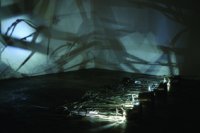
O
O
O
O
3 – 11 September, 2009
10am – 5pm Monday to Saturday
COFAspace
College of Fine Arts
Cnr Oxford St & Greens Rd
Paddington NSW
9385 0684
Image: Laura Woodward

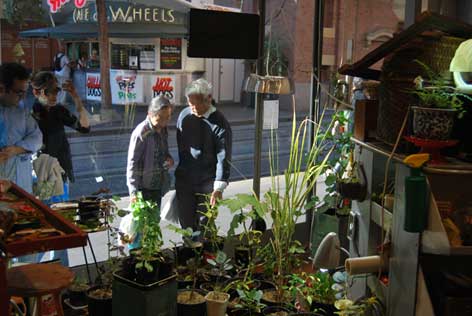
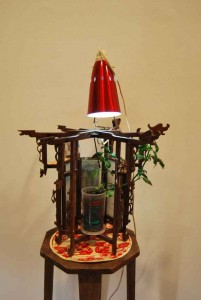 Â Â
  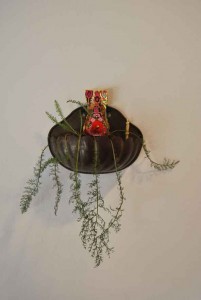
 Â Â
  